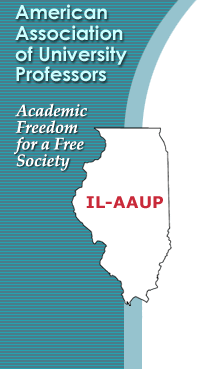 |
|
Review Your Shared Governance Process
By Ken Andersen
Higher education confronts enormous challenges in a rapidly changing environment. Financial concerns may appear to be the most important challenge facing colleges and universities, even in some cases raising questions of the institution's survival. But simultaneously, we face the challenge of educating more students, many who in the past had no need of a higher education. We need more effective instructional strategies utilizing new technologies and a renewed national commitment to funding ground-breaking research to retain the nation's international educational and research standing. Recent comparisons suggest we are falling behind—certainly at the elementary and secondary level. And we need to reverse the view that a higher education in only a private good and not a public good.
Given the stresses besetting the academy, it is no surprise that the shared governance--the hallmark of American higher education and key to its quality--is and will be tested, perhaps as never before. Our AAUP State Conference is receiving more requests for help at institutions with and without AAUP chapters. Many calls suggest a failure of administrations to utilize the shared governance process to cope with the dilemmas we mutually face. That failure frequently results in significant mistakes harming the institution in varied, multiple ways by not using faculty expertise for curricular innovation, incorporation of technology, accommodating budgetary restrictions while assuring students a high quality education. That failure results in a loss of trust in the institution and its officials, and a decline in faculty morale.
Faculty and administrators should continuously assess the effectiveness of shared governance in addressing issues as they arise. Systems that exist on paper or worked in the past may fail for any number of reasons including changes in faculty or administrative leadership and any number of external or internal forces. No institution is exempt from the necessity to ensure that a strong, functional system of shared governance is in place. Periodic joint assessment of the shared governance system by faculty and administrators serves all parties well.
Recent events at the University of Illinois may serve as a case study of the need to ensure that the shared governance process functions with maximal efficiency and effectiveness. At a time when consistency in leadership and clarity of mission are of great importance, the University has seen four presidents at the helm in less than five years, including Stanley Ikenberry, president from the late 1970's into the 1990's, who served on an interim basis. The former Board of Trustees was asked to resign by the Governor. At one time or another from 2010 into 2012 almost all major leadership positions - chancellors, provosts, vice-presidents - were filled by interim appointments.
With appointment of an excellent array of new administrators, new president Robert Easter, new Board of Trustees led by Christopher Kennedy, and a renewed commitment to the processes of shared governance, the university has stabilized administratively and is moving forward in a dynamic fashion. For most faculty and students, their own work as teachers, researchers, and students was essentially unaffected. But faculty participating in shared governance activities were fully engaged in efforts to rebuild the system of shared governance.
Much of the turmoil resulted from a failure to utilize the shared governance process. The process was in place, but not utilized by the former Board of Trustees and key administrators. Some prior Board members acted improperly going far beyond their proper role. Two presidents appointed from the outside failed to appreciate the nature of faculty commitment to the shared governance system and did not utilize it effectively, and at times not at all. Thus, significant mistakes were made as a result of not drawing upon faculty expertise and not using normal decision-making processes. Inevitably this failure of the shared governance process resulted in a loss of faculty trust in the decisions being made. As Ikenberry said at the time of his 1990's retirement--as best I recall his words--"Lose the trust of the faculty, you lose the presidency."
One mark of the renewed commitment to the shared governance process was a joint retreat this summer by the Board of Trustees and the University Senates Conference, faculty leaders from the three campuses. The retreat was markedly forward looking in addressing current needs, aspirations, and future goals of the university and its campuses.
Larry Faulkner, former Urbana-Champaign faculty member and administrator, and later president at the University of Texas, focused on the value of shared governance in his presentation. He cited Clark Kerr's 1972 book, The Uses of the University: "About 85 institutions in the Western world established by 1500 still exist in recognizable forms . . . 70 [are] universities with professors and students doing much the same things, and with governance carried on in much the same ways."
Faulkner, an excellent colleague and administrator in my experience, described at length the value of shared governance: "A university is a distinct human activity, and shared governance is essential to its healthy, optimal operation." He offered eight principles as a guide to developing a "sensible balance among the delegated authority of the faculty, the executive authority of presidents, chancellors, provosts, department heads and other officers, and the fiduciary oversight by trustees." These eight principles serve as a guide and an excellent test to use in reviewing the health of campus shared governance.
|
|


